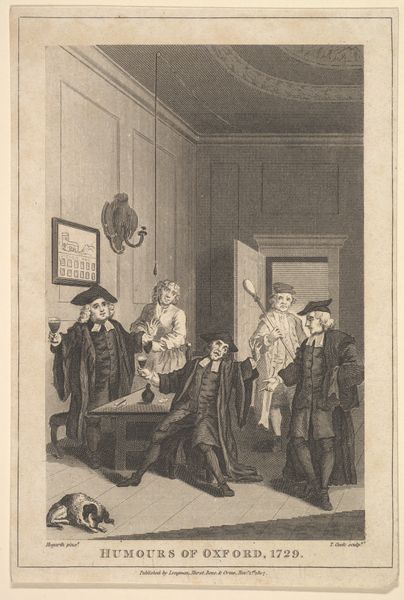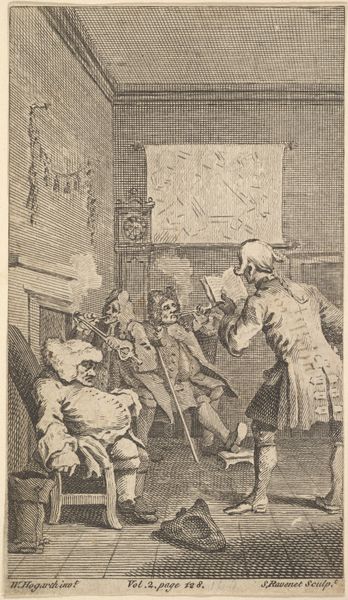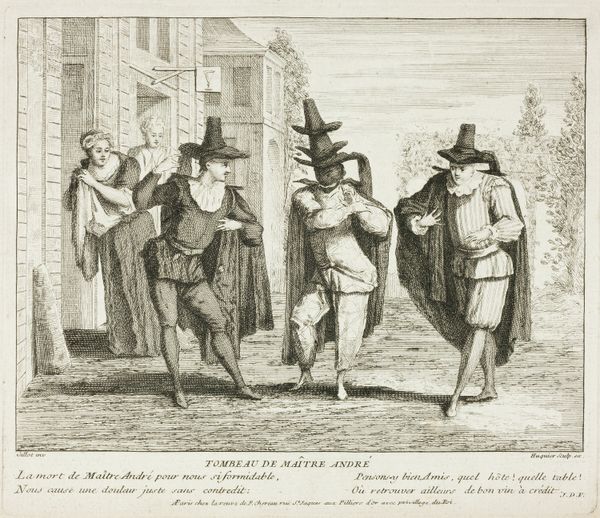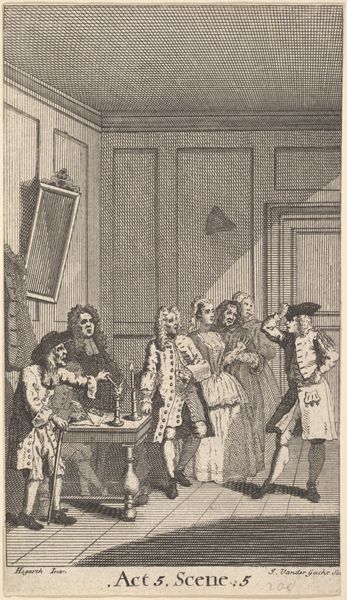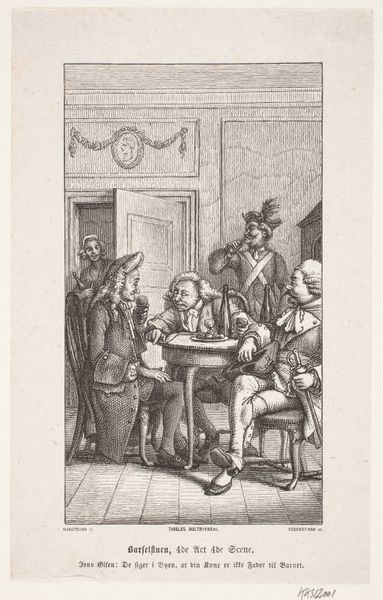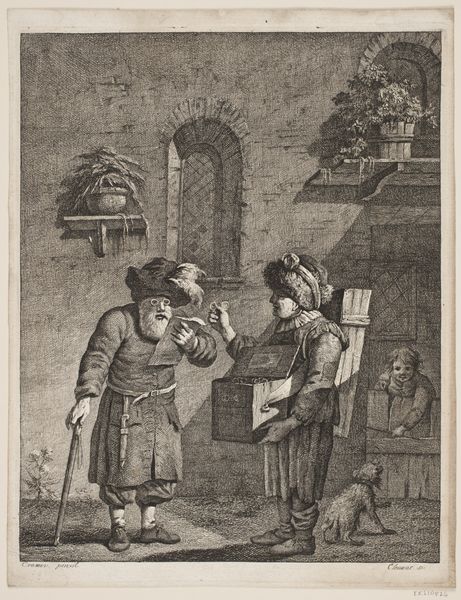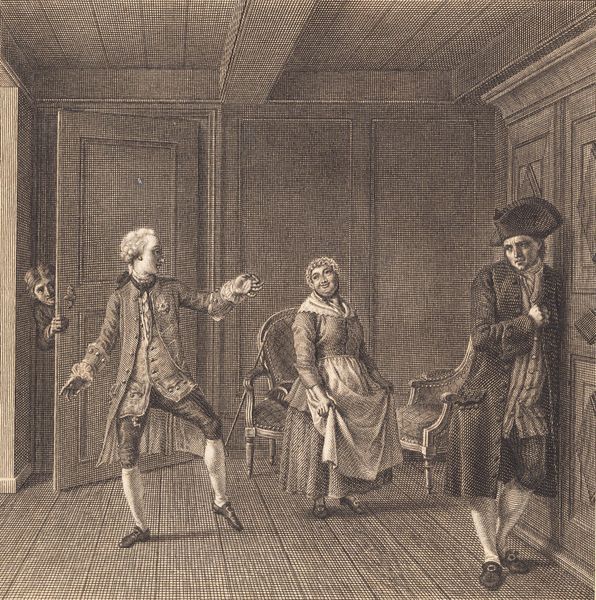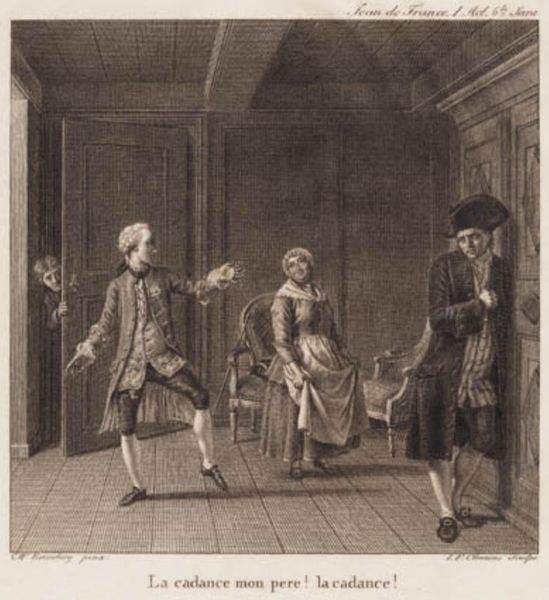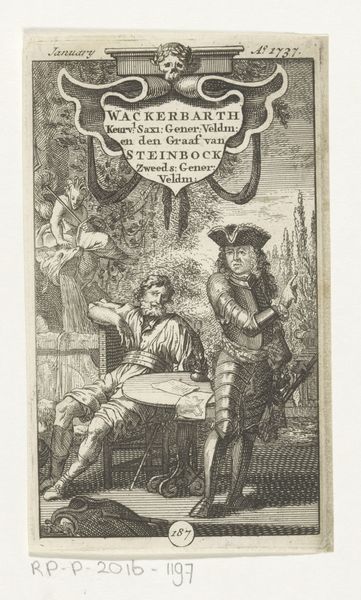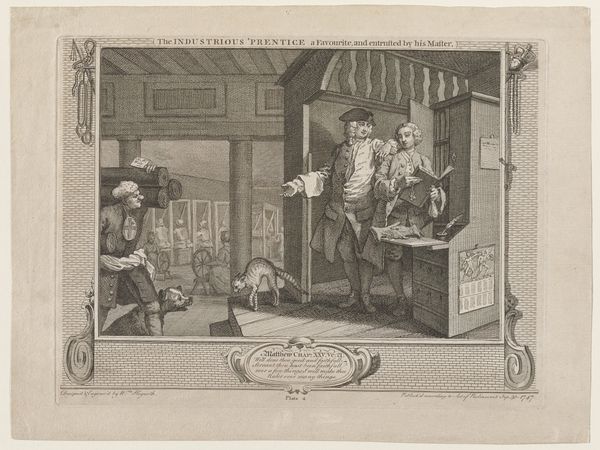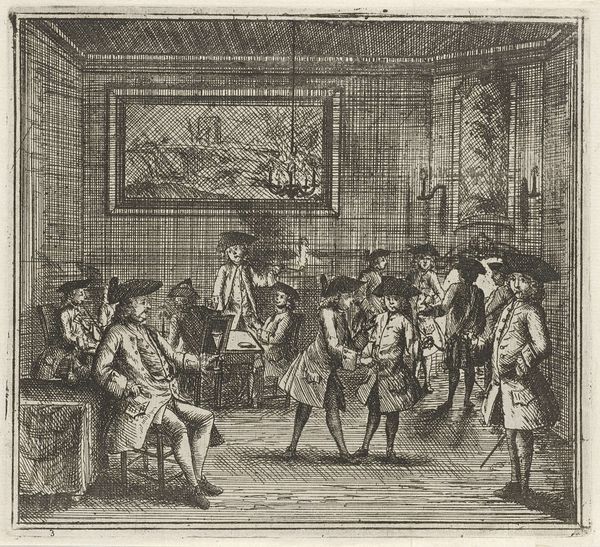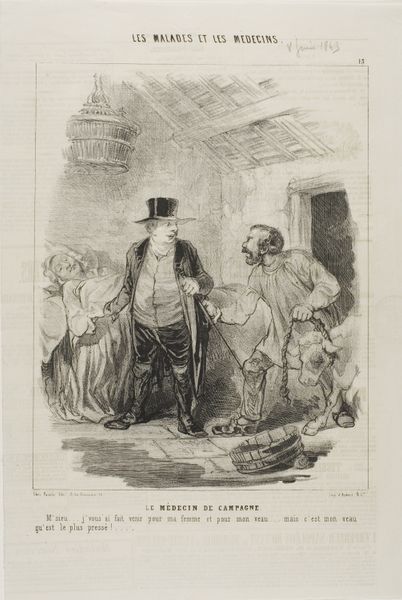
drawing, print, ink, engraving
#
drawing
#
narrative-art
#
baroque
# print
#
figuration
#
ink
#
men
#
genre-painting
#
history-painting
#
engraving
Dimensions: sheet: 6 11/16 x 4 1/16 in. (17 x 10.3 cm)
Copyright: Public Domain
Curator: Hogarth's scene, titled "Frontispiece to 'The Humours of Oxford,'" dating back to 1730, pulled me right in. What do you make of this, as a composition? Editor: It's certainly chaotic, yet precisely rendered. It seems almost theatrical in its staging. The engraving on laid paper strikes me immediately as a commentary on academic excess. Is that fair? Curator: I think you are spot on, I'm drawn to the techniques here – the labor, the actual carving into the metal to produce this print. Note the line weights and textures achieved by Gerard Vandergucht, the engraver. The way he handled the figures' clothing speaks of specific wool or linen qualities, giving volume and weight to bodies inebriated in a room that seems both elegant and squalid, somehow. Editor: Exactly! This isn’t just about artistry; it is about the cultural and social environment surrounding these scholars, or at least as imagined and lampooned. See how the setting suggests something beyond scholarly pursuits. Who paid for this print? Who saw it? It acts almost as propaganda. Curator: Agreed. One cannot separate it from its function within the print culture and perhaps also the culture of consumption—a material culture of satire distributed, and collected, to what extent, though? How did this narrative and Vandergucht's meticulous hand, reinforce certain social stratifications or beliefs? It becomes very loaded upon scrutiny. Editor: These are powerful questions. The very accessibility of the print underscores how imagery manipulates popular opinion, and its circulation reveals complex socio-political realities. One is inclined to think about audience and context! Curator: Absolutely, the physical print embodies social and economic tensions and their reflection—even enforcement—by visual messaging available and circulated. Considering those hands engaged with material: creator and distributor—even down to those that bind up collections including this satirical 'frontispiece.' Editor: Ultimately, its place now, framed here in a museum—what has it come to represent as cultural artefact? How will contemporary museum visitors frame the ‘humours of Oxford’ today, and to what extent might its message still hit home, do you suppose?
Comments
No comments
Be the first to comment and join the conversation on the ultimate creative platform.
